I'm student in agronomy and the subject of my final year study is to assess the number of bees in pictures. I tried some methods (thresolding, template matching with ciratefi algorithm or with imageJ) but none works fine.
I'm a beginer with matlab and I wonder if it's possible to train cascade detector and use the fonction vision.CascadeObjectDetector to count bees on pictures.
Two pictures examples :
 and
and
http://img4.hostingpics.net/pics/978154DSC0660.jpg
How many positive and negative samples do I need to use ? HOG ? Haar ? LBP ?
Thank you for your help